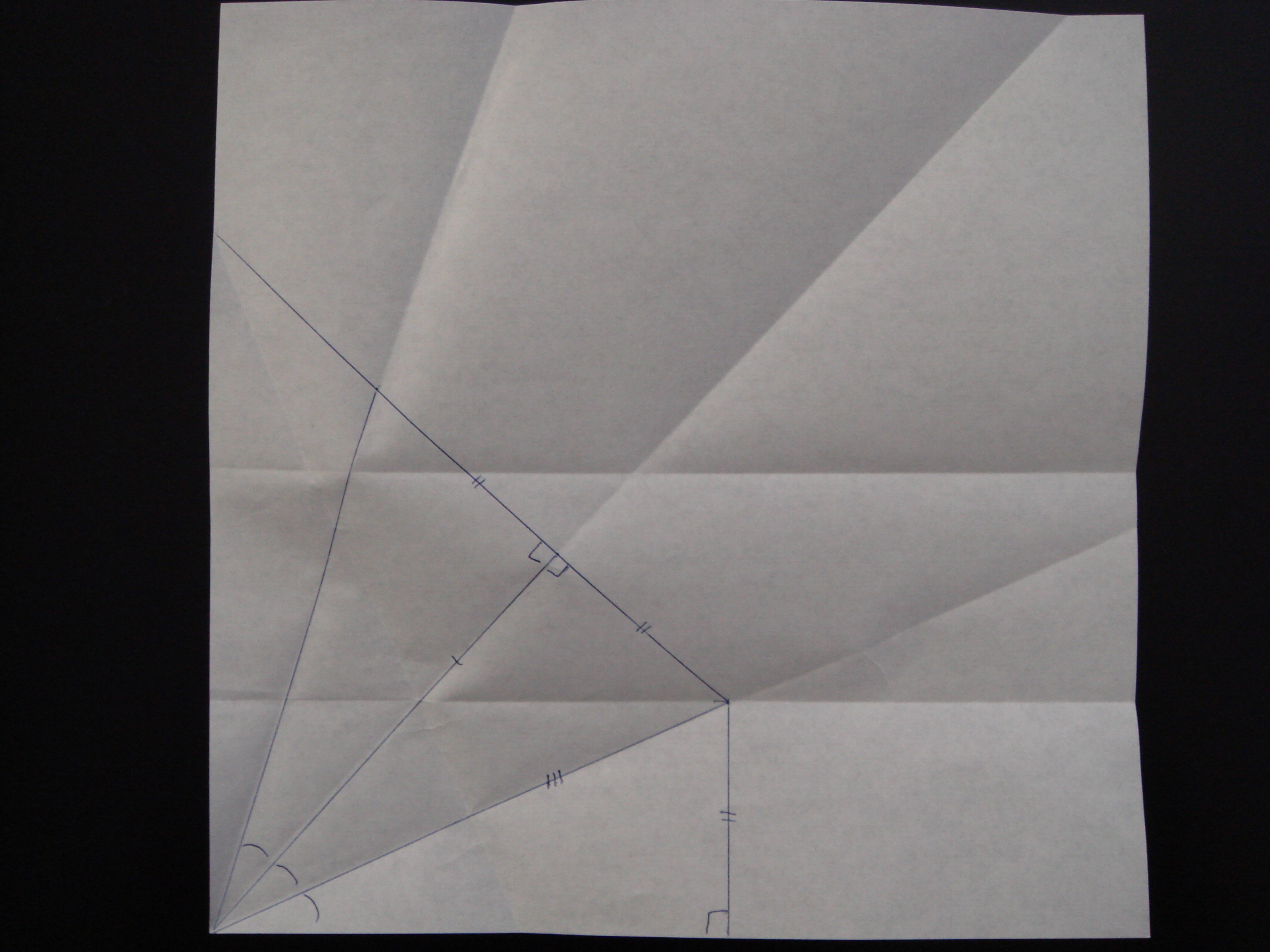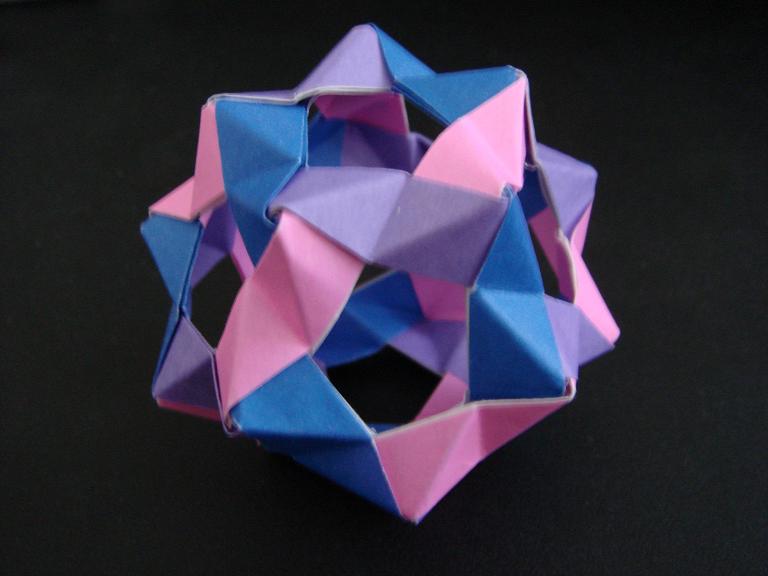- About MAA
- Membership
- MAA Publications
- Periodicals
- Blogs
- MAA Book Series
- MAA Press (an imprint of the AMS)
- MAA Notes
- MAA Reviews
- Mathematical Communication
- Information for Libraries
- Author Resources
- Advertise with MAA
- Meetings
- Competitions
- Programs
- Communities
- MAA Sections
- SIGMAA
- MAA Connect
- Students
- MAA Awards
- Awards Booklets
- Writing Awards
- Teaching Awards
- Service Awards
- Research Awards
- Lecture Awards
- Putnam Competition Individual and Team Winners
- D. E. Shaw Group AMC 8 Awards & Certificates
- Maryam Mirzakhani AMC 10 A Awards & Certificates
- Two Sigma AMC 10 B Awards & Certificates
- Jane Street AMC 12 A Awards & Certificates
- Akamai AMC 12 B Awards & Certificates
- High School Teachers
- News
You are here
Origami in the Geometry Classroom
by Ophir Feldman, Wentworth Institute of Technology
Let’s face it, teaching an elementary college geometry course for design students can easily become a snooze fest. I was looking for a way to make the class a bit more engaging by appealing to these students’ creative/artistic side while showing them how to ’do mathematicsâ? with their bare hands. I always liked origami and I could see the potential for adopting it to geometry but I started to think: how can a flapping bird be used to demonstrate geometrical concepts? Sure, it’s fun to fold and create projects but it must have some meaningful point that relates to material in the course. In addition, I must keep the folding to some basic creases, nothing too fancy like an open double sink fold.
Well, I looked around and found a great resource to help me get started. Thomas Hull’s Project Origami answered my questions and provided ideas for wonderful classroom activities. For example, did you know that a few basic folds can subdivide a square piece of paper into exact thirds, fourths, fifths, nths? And not only that, but you can easily prove this using only similar triangles! This is a proof they can see right on their piece of folded paper.Let’s face it, teaching an elementary college geometry course for design students can easily become a snooze fest. I was looking for a way to make the class a bit more engaging by appealing to these students’ creative/artistic side while showing them how to ’do mathematicsâ? with their bare hands. I always liked origami and I could see the potential for adopting it to geometry but I started to think: how can a flapping bird be used to demonstrate geometrical concepts? Sure, it’s fun to fold and create projects but it must have some meaningful point that relates to material in the course. In addition, I must keep the folding to some basic creases, nothing too fancy like an open double sink fold.
Here’s another easy one: With only a couple of moves you can trisect any acute angle on your square paper ’ a feat one cannot accomplish even with a straightedge and compass. This can be easily shown with some congruent triangles that students can trace after performing the folds (for a quick guide to trisecting an angle using origami click here).
And yes, even the good old flapping bird has something to teach these students. But to me, the nicest activity involves constructing modular Bucky Balls using Tom’s PHiZZ units. The units are very easy to fold and putting them together to form, say, a dodecahedron (see picture below) is like doing a fun puzzle. Especially challenging is to try and put it together with only three colors such that no two colors touch. The students learn the real geometric restrictions that these structures must obey. It is useful to point out that Bucky Balls (also known as geodesic domes) are used in nanotechnology, architecture and design. Mathematically, students use Euler’s formula, do some counting of vertices, edges and faces and then solve a system of linear equations to arrive at the required relationships between the number of pentagon faces, hexagon faces, edges and vertices.
For the three-colorability, students learn about Hamilton circuits. This project definitely gets a lot of math bang-for-the-buck.
On exams, I feel comfortable asking students deeper questions relating to concepts that we covered using origami. I also dare to ask them to prove or justify their answers. The results are much better than when I ask these kinds of more abstract questions about concepts that were learned without the aid and motivation of origami.
The feedback from students is mostly positive. They never expected their ’boringâ? math class to have an origami twist. What is interesting is that some students have trouble following the most basic of folding instructions. I found this surprising since working with their hands and good visualization skills are supposed to be their forte. So be warned: some students do get frustrated, but with repeated explanations and one-on-one help from the instructor or fellow classmates, they get it.
So, go ahead give it a try. You really don’t have to be an origami master to bring origami to your math class.
Reference
1. Hull, Thomas, 2006, Project Origami, A.K. Peters.
About the Author
Ophir Feldman (feldmano@wit.edu) received his B.S. in Mathematics from Hofstra University in Hempstead, New York. He received his M.A. and Ph.D. from Brandeis University in Waltham, Massachusetts and is currently an Assistant Professor at Wentworth Institute of Technology in Boston, Massachusetts. His research area is geometric group theory and he has a strong interest in the mathematics and art of origami and its applications to the classroom.
The Innovative Teaching Exchange is edited by Bonnie Gold.







